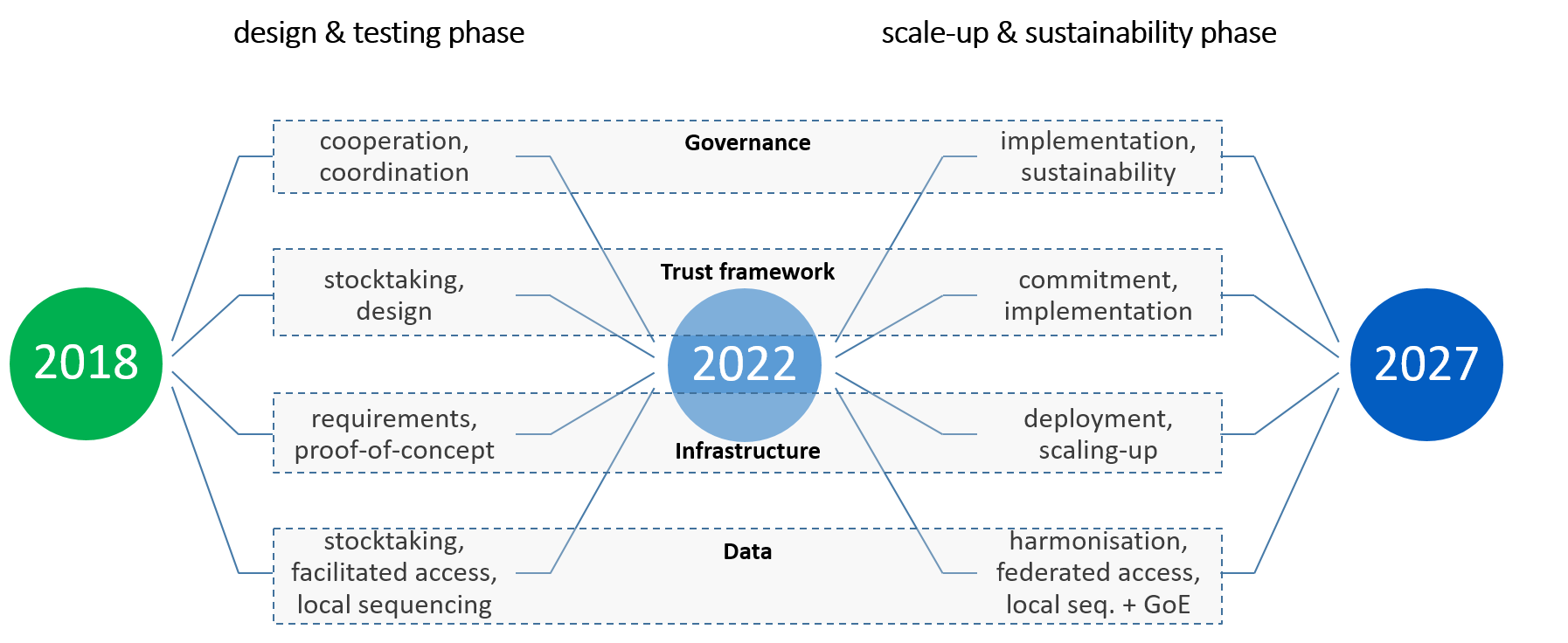In order to disseminate modern technologies in government work, Natural Resources Canada has adopted a collaborative approach that brings together data experts to support management, planning, and decision-making processes.
Years ago, Many governments around the world have realized the magnitude of the opportunity presented by artificial intelligence, In particular, given the vast amounts of data available to it, Which, if employed in accordance with rational policies, will profoundly change the daily life of every citizen.
In Canada, The government faces challenges in reaching real and effective employment of data science and artificial intelligence, Working in the private sector is usually the first choice for talent and specialization in this field. The risks associated with disruptive technologies are even greater in the government sector than in the private sector.
In the face of this reality, Government initiatives are launched Petro, The Canadian Department of Natural Resources has been selected to host one of them, As the entity responsible for the country's abundant wealth and shaping its sustainable future, It established the Digital Accelerator to explore the horizons of digital solutions and develop strategic partnerships.
To do this, The accelerator relies on many data sets, including technological, economic, environmental and social factors, It adds advanced technological tools.
In 2020, authorities set digital standards to achieve the government's goal of being more flexible, open and user-centric. In this context, The administration took into account several objectives in launching the digital accelerator, It benefited from pioneering and advanced experiments to come up with what can be called a "minimum model" that meets initial needs and tolerates trials and failures, but is scalable and flexible at the same time. So that it serves diverse projects for different bodies in parallel. To date, approximately 30 proposals have been received from these projects, which the management is considering as effective and responsive to the priorities of the institution and their potential to be replicated if successful. It attaches great importance to projects that are qualified to produce knowledge and apply it in other contexts.
The first objective of the administration was capacity building, It moved away from the closed team methodology and brought together many highly skilled data scientists and expertise associated with artificial intelligence, And those with diverse backgrounds such as mathematics, statistics and computer science.
To achieve the second objective, The team set out to identify the uses of artificial intelligence to achieve added value, This experience is not the first era of technology management, It uses a variety of scientific tools in weather studies, weather forecasting and simulations. Therefore, Work has proceeded towards completion, not replacement, Projects included, for example, the use of artificial intelligence in access to groundwater, Improving electric vehicle infrastructure via big data, Apply machine learning technology to classify and analyze satellite imagery, And employing deep learning technology to detect mineral deposits. The accelerator also provides officials, researchers and consultants with the tools and knowledge needed to improve the management of the electrical grid.
The third objective, It was the establishment of a certain level of work momentum for the whole entity, and digital literacy in it, And to give a cultural character to these efforts by exchanging the knowledge they produce in workshops and friendly sessions that bring together specialists and workers, They are conducted under endearing titles such as "Lunch and Learn" or "Ask the Experts". To share experiences at a more specialized level, The accelerator recently announced strategic partnerships with data science teams at Statistics Canada, and the local subsidiaries of Microsoft and Google.
The Treasury Board has directed the adoption of automated systems in administrative decision-making as a mandatory policy tool in most federal government institutions. Where these institutions require an assessment of the effects of algorithms, The necessary measures shall be taken to ensure the quality of the data, It is committed to full transparency in disclosing its uses.
While AI seems like an ideal option to solve government issues efficiently, accurately and quickly, Dealing with it on this basis may complicate the matter further. Machine reliance on decision-making carries serious risks, such as prejudice, which has increased significantly in recent years, threatening discrimination among citizens. For example These techniques can identify the desired and undesirable outcomes in a previous experiment and project them onto a current situation to extrapolate possible future outcomes. However, algorithms based on historical data may focus on racial or class classifications that prevailed in the past and are now rejected. It may even lack accurate representations.
Other times, AI systems may come up with inexplicable decisions, predictions, or ratings, This is directly proportional to their complexity, But the justification of administrative actions is crucial, Especially if they are issued by a federal government responsible for interpreting its decisions to citizens logically and understandably, It cannot attribute these decisions to automated algorithms.
Some also question the ability of digital solutions to bring about radical change. The digital accelerator team believes that understanding the challenge and finding the qualified staff to deal with it are elements that can achieve impact quickly, Even the COVID-19 pandemic contributed to the success of the experiment and doubled the rates of internet dependence of the government and citizens.
Arguably, the presence of a multidisciplinary integrative team provides cross-functional support to science and policy experts in natural resource management. The study of satellite imagery using technology will also contribute to flood and fire mapping and protection.
In its third year, The Digital Accelerator guides government agencies to make decisions and launch enterprise innovations that responsibly use high technologies to save costs, accelerate productivity, increase business accuracy, and reduce risk.
References:
https://www.statcan.gc.ca/en/data-science/network/digital-accelerator
https://www.statcan.gc.ca/en/data-science/network/automated-systems






